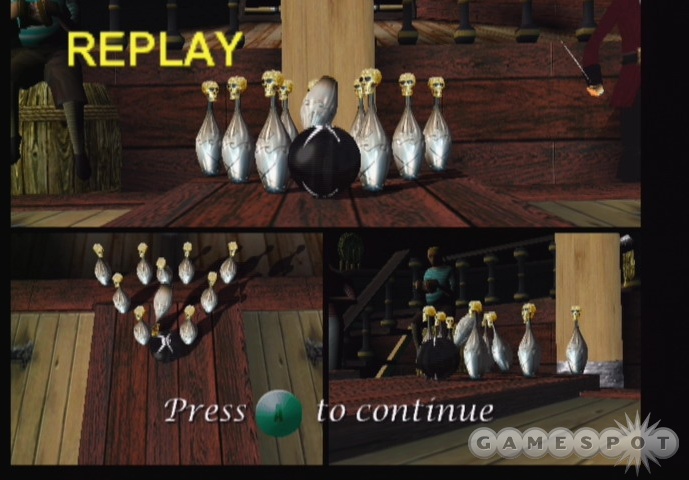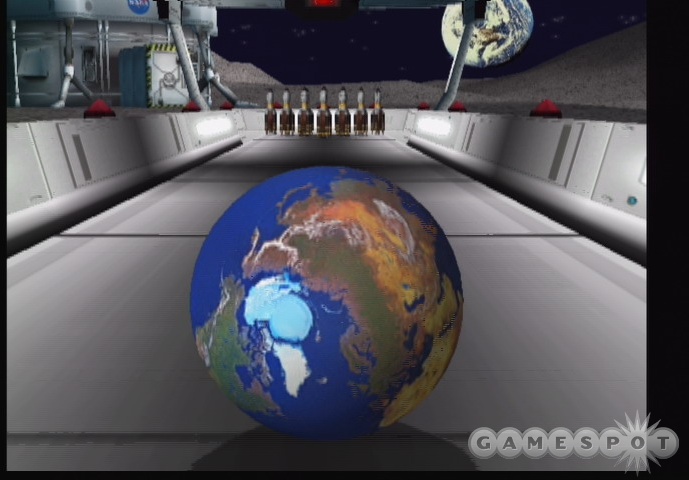In the grand scheme of things, today's bowling games aren't that much different from the games we saw hitting arcades and arcane home consoles 20 years ago. While some bowling games tend to take advantage of technology and the advancement made in virtual physics over the years, others just let you hurl a ball down a lane at some pins. Crave's budget-priced GameCube offering, Strike Force Bowling, is actually a renamed and slightly updated version of a recent PC bowling game, Fast Lines Bowling. Regardless of what you call it, the game attempts to combine zany locales with tried-and-true bowling mechanics, but the game lacks substance and ultimately won't please bowling fans, be they hardcore or casual.

There are several gameplay modes to choose from, though most of them are just basic variants of the standard game of bowling. You can play in open play, practice, skins, tournament, and challenge modes, which are all different takes on a regular game. Golf mode gives you different pin configurations each frame and a set number of rolls to hit them all in. The game calls that number par and uses basic golf scoring.
The gameplay in Strike Force is pretty basic, though it could have been streamlined a bit. You can position your bowler, aim for a specific spot on the lane, pick different ball weights, and control the amount of spin put on the ball. Once you've decided on all of that, hitting A starts your roll in motion. The game uses a "three-click" system that is lifted from most modern golf games. The first press starts the meter going. Then you press the button bar again on the power meter to set the strength of your roll. Finally, the indicator swings over to the accuracy portion of the meter, where you must press the button a third time to determine the positioning of your roll. And that's pretty much it. The game claims to model oil dispersion, which changes the way the lane affects your rolls over time. It also offers the ability to turn oil dispersion off, but we didn't really notice much difference between the two choices. As such, all you need to do is find a sweet spot to place your ball and get good at timing your rolls, which is quite easy to do. Once you've got your timing down, rolling strikes is easier than it probably should be.
Strike Force contains several different characters, including male and female bowlers, a robot, and an alien. Most of the more outlandish bowlers are locked at the start. The models don't animate very well, and many of them use the same animations when reacting to a particularly good or bad roll. The game also has 12 different locations to bowl in, ranging from your average bowling alley to castles, pirate ships, and the moon. The environments look OK, but they also aren't very exciting.

While Strike Force contains bad music, you can thankfully turn it off. Unfortunately, the game doesn't exactly have interesting sound, either. It plays back the sounds of balls rolling on lanes and striking pins pretty well, but that's about it. Also, each lane uses the same sound, even though you could imagine that bowling on a pirate ship or striking pins shaped like little rocket ships would probably sound slightly different from your everyday bowling noises. Different ambient sound is used in some locations, though, and the Xbox version features custom soundtrack support.
The game is roughly the same on all three consoles, which makes you wonder why the GameCube version wasn't released until almost a year after the other two. But regardless of that fact, in the end, Strike Force Bowling is a textbook example of a budget game. Its no-frills approach is inoffensive but also quite drab.